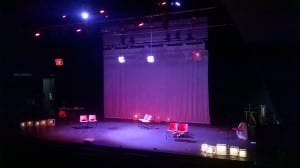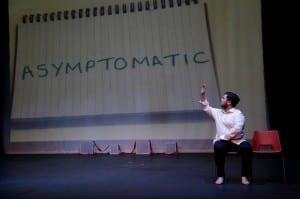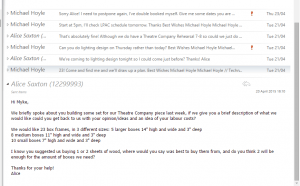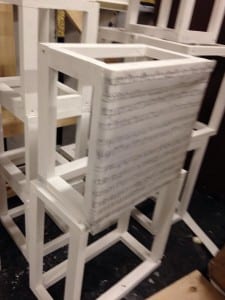Being stage manager for Fill in the Blank has been a true eye opener. Not only have I had the chance to work with some truly amazing people, and watch our piece develop (which I have never done before due to usually performing!), I have discovered and developed skills within myself that I never imagined I would have. I have developed the ability to remain outside of disputes, and ‘develop[ed] a critical eye, to observe the performance from an objective point of view’ (Palmer, 2000, 96). My key technical terms list has become rather extensive:
I actually understand what all of them mean, which is a bonus!
As for the performance, technically, very little went wrong. I feel like our thorough ‘amount of pre-show planning and preparation… paid off’ (Palmer, 2000, 93). All the cue’s were on time and in the correct chronology. We made minor changes to two of our lighting states just before the doors opened: LX23 changed from fading into a blackout, to fading down to a 15% dimmed lighting state; LX32 and 32.5 became 7 second fades instead of 10seconds. During the Ribbon Sequence, there were 7 different strobe LX’s that were cued visually. As the sequence was performed slightly faster, possibly due to nerves, I was unable to complete all 7 cues and skipped the last one to avoid the stage right mic spot coming on too late. I also added SQ 12.5, a fade and stop cue for SQ12 as in both earlier runs the Solo Sequence was again performed too fast as a result of nerves; ‘the presence of a large audience makes a huge difference to performers… all members of the company will experience increased levels of adrenaline’ (Palmer, 2000, 93). Despite this, the cast successfully used all of their required props, with none being misplaced or misused as a result of said nerves. All the spacing of the chairs was marked in white tape on the floor to avoid the cast misplacing them in scenes. But most importantly, no ribbons were dropped in the Ribbon Sequence!
In hindsight, it would have been nice to have had more time practising with the microphones. Although we had them in 4 rehearsals leading up to the performance, the cast still struggled with their diction and their P’s and B’s when speaking into each mic. As obtaining performance space in the LPAC building proved difficult throughout the process, as well as the introduction of the mics in our piece coming in quite late, unfortunately we were unable to rehearse with them as much as we needed to. A further detailed report of the day can be found on my Post Show Report:
Overall, the piece ran incredibly smoothly. Although sequences were performed faster than rehearsed at times, the production still managed to run smoothly, and the cast adapted excellently to any excess music as a result of this. I am immensely proud of The Man Whose Memories Fell Out, and the company that created it!

Works Cited
Palmer, S. (2000) Essential Guide to Stage Management Lighting and Sound. Oxon: Bookpoint.
Crowe, P. (2015) [image] Available at: https://www.flickr.com/photos/61839232@N02/17713112130/in/album-72157653093111156/



